In today’s digital age, food blogging has become one of the most popular ways to share your love for cooking, recipes, and food photography with the world. However, with thousands of food blogs out there, standing out can be challenging. This is where SEO (Search Engine Optimization) comes into play. SEO helps search engines, like Google, find and rank your blog higher in search results, making it easier for people to discover your content.
The truth is, even the best recipes won’t get noticed if they’re buried on page 5 of Google. By mastering SEO, you can improve your blog’s visibility, attract more readers, and grow your audience organically. This article is your complete guide to understanding and implementing SEO strategies that will help your food blog rank higher, get more traffic, and ultimately grow your brand.
The Secrets to Ranking Your Recipe Blog on Google
Getting your recipe blog to rank on Google requires a combination of technical SEO, keyword research, content optimization, and user experience improvements. The algorithms that search engines use to rank content are complex, but at their core, they reward sites that deliver relevant, high-quality content that meets users’ search intent.
Many food bloggers focus solely on creating delicious recipes and beautiful images, but without a solid SEO strategy, it’s unlikely those posts will rank well. Understanding how Google’s algorithm works, and focusing on factors such as site speed, mobile optimization, and backlink building, are essential to getting your blog to the top of the search results.
Keyword Research and Selection
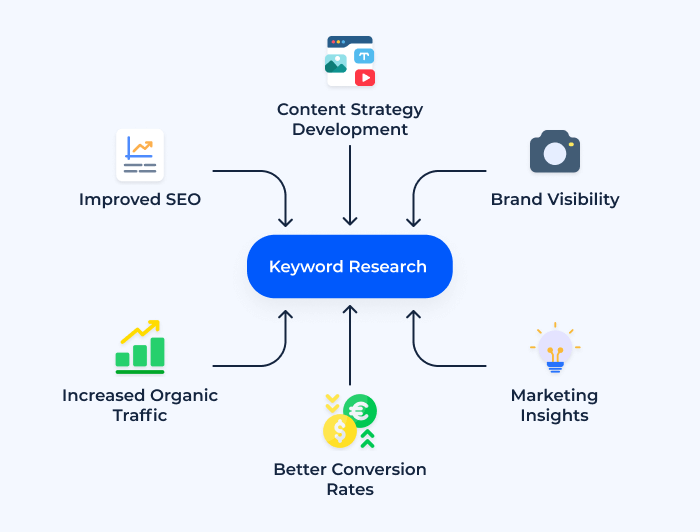
Discover the Keywords Your Readers Are Searching For
The foundation of any SEO strategy is keyword research. Keyword research helps you understand what your potential readers are searching for, and how you can create content that aligns with their needs. For food bloggers, it’s important to target both broad and niche keywords. For example, “healthy dinner recipes” is a broad keyword that will likely have a lot of competition, whereas “easy healthy gluten-free dinner recipes” is more niche and specific.
Long-tail keywords, which are more specific phrases that have lower search volumes, can be easier to rank for and often attract more engaged readers. In my own experience, targeting highly specific search terms like “vegan chocolate avocado mousse” has brought me more engaged readers than broader terms like “vegan desserts.”
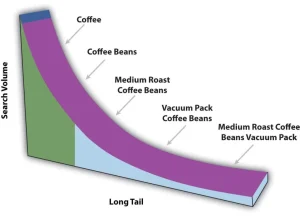
Pro Tip: Pay attention to seasonal trends. For example, keywords related to “holiday cookies” or “summer grilling recipes” can help you tap into searches that spike during certain times of the year.
Essential Tools for Keyword Research
There are several tools available to help you discover the best keywords for your food blog:
- Google Keyword Planner: This is a free tool that gives you insight into how often certain keywords are searched for and how competitive they are.
- Ubersuggest: Offers keyword ideas, content suggestions, and SEO insights that can guide your strategy.
- AnswerThePublic: Great for discovering the questions people are asking about your niche. This is especially useful when you’re developing content ideas around frequently asked questions.
- Ahrefs and SEMrush: These paid tools offer in-depth analysis of keyword difficulty, competitor performance, and backlink opportunities.
In my personal experience, using Ahrefs to analyze competitors has been invaluable. Not only can I see which keywords they’re ranking for, but I can also identify content gaps and capitalize on underutilized keywords.
On-Page Optimization
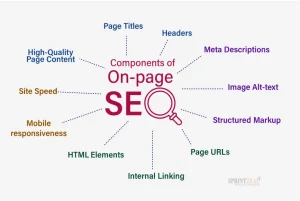
Titles and Meta Descriptions That Google Loves
Your title tag and meta description are the first things people see when your blog post appears in search results. A well-crafted title that includes your primary keyword and piques curiosity will increase your click-through rate (CTR), which is a ranking factor for Google.
For example, instead of a basic title like “Best Chocolate Cake Recipe,” you might try something more engaging like “The Best Chocolate Cake Recipe: Moist, Rich, and Easy to Make.” This not only includes your primary keyword but also entices the reader with a promise of quality.
The meta description should expand on the title, providing more detail and encouraging users to click. Adding a clear call to action, such as “Learn the secrets to making the perfect chocolate cake every time,” can further improve your CTR.
Importance of H1, H2, and H3 Tags
Header tags (H1, H2, H3, etc.) not only help organize your content but also play a crucial role in on-page SEO. The H1 tag is typically the title of your blog post and should contain your primary keyword. Subheadings (H2 and H3 tags) help break up your content into manageable sections, making it easier for readers to digest and for search engines to understand.
Search engines use these tags to determine the main topics of your page, so it’s essential to include relevant keywords in them. Additionally, properly structured content improves user experience, keeping readers on your site longer—a factor that Google considers when ranking pages.
Quality Content That Satisfies Your Readers’ Appetite
In the world of food blogging, quality content is king. This means not only creating delicious, easy-to-follow recipes but also adding value through tips, personal stories, and expert advice. Google’s algorithm rewards in-depth, well-written content that keeps readers engaged.
For example, instead of just listing the ingredients and instructions, share the inspiration behind the recipe, cooking tips, or possible substitutions. My readers have responded positively when I explain why certain steps are crucial, like why letting dough rise overnight makes bread fluffier. These personal insights not only build trust but also encourage users to stay on the page longer, boosting SEO.
Optimized Images: A Visual Feast for Search Engines
Food blogs rely heavily on imagery to capture readers’ attention. However, if those images aren’t SEO optimized, they can slow down your site and harm your rankings. One of the simplest ways to optimize your images is by compressing them without losing quality. Tools like TinyPNG or ImageOptim can reduce file sizes and improve load times.
Don’t forget to use descriptive alt text for each image, which helps search engines understand what the image is about. Include keywords naturally in your alt text (e.g., “gluten-free blueberry muffins”) to improve your SEO without keyword stuffing.
Local SEO for Food Bloggers
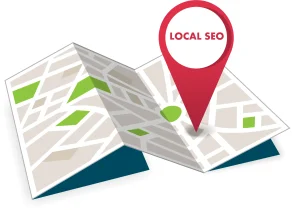
Attract Local Diners with Local SEO
If your food blog also offers local services, such as cooking classes or catering, local SEO can help you attract nearby readers or potential customers. Local SEO focuses on optimizing your blog for geographic-specific searches, like “best vegan bakeries in Austin” or “local food bloggers in San Francisco.”
Link Building: The Secret Ingredient to Success

Quality Backlinks: The Spice That Elevates Your Ranking
One of the most powerful off-page SEO strategies is link building. Backlinks, or links from other reputable websites that point to your blog, are a signal to search engines that your content is credible and authoritative. The more quality backlinks you have, the higher your blog will rank.
Pro Tip: Focus on obtaining links from high-authority food blogs, news sites, or reputable recipe-sharing platforms like AllRecipes or FoodGawker.
Collaborations with Other Food Bloggers: A Recipe for Success
Collaborating with other food bloggers through guest posts, recipe roundups, or social media shoutouts can significantly boost your blog’s visibility. Not only does this create a network of support, but it also generates valuable backlinks that improve your domain authority.
Personally, collaborating on recipe roundups with other food bloggers allowed me to reach new audiences while also gaining backlinks from trusted sources, which positively impacted my blog’s rankings.
User Experience: The Taste of Satisfaction
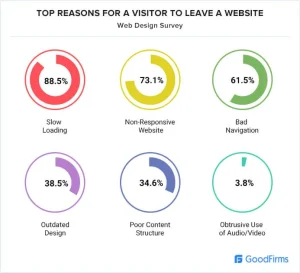
Page Speed: Serve Your Content Fast
Page speed is a critical ranking factor for Google. If your blog takes too long to load, visitors will likely leave before the page fully opens, increasing your bounce rate. Improving page speed involves optimizing images, using a content delivery network (CDN), and choosing a reliable hosting service.
After switching to a faster hosting provider and optimizing my images, my page load time improved significantly, and the bounce rate decreased. You can measure your blog’s speed with tools like Google PageSpeed Insights or GTMetrix.
Responsive Design: Adapt Your Blog to Any Device
With more than 50% of internet traffic coming from mobile devices, having a responsive design is essential. This means that your blog should look and function well on any device—be it a smartphone, tablet, or desktop computer. Google prioritizes mobile-friendly sites in its ranking algorithm, so ensure your blog is responsive.
Intuitive Navigation: Guide Your Readers Effortlessly
Creating a seamless navigation experience is key to keeping readers on your site. Organize your recipes into categories, add a search bar, and ensure that important pages like “About Me,” “Recipes,” and “Contact” are easy to find.
In my experience, after reorganizing my blog with a clearer menu and categories, readers stayed longer, explored more pages, and my bounce rate dropped noticeably.
Analysis and Continuous Improvement

Google Analytics: Your Personal Data Chef
Google Analytics is a powerful tool that helps you understand how visitors interact with your blog. It tracks metrics like page views, bounce rate, and average session duration, giving you insight into which posts are performing well and which need improvement.
By using Analytics, I was able to identify which recipes were getting the most traffic and focus on creating similar content, boosting my overall traffic and engagement.
Keep Up with Trends and Adapt Your Strategy
SEO is an ongoing process, and keeping up with changes in Google’s algorithm or user behavior is crucial for long-term success. Regularly updating old blog posts with new keywords, optimizing for voice search, and creating content around trending topics are all ways to keep your blog fresh and relevant.
For example, I’ve noticed that optimizing posts for questions (e.g., “How to make vegan lasagna”) has become increasingly important as more people use voice search on their mobile devices.
FAQ: SEO Tips for Food Bloggers
How can I get my food blog to be known?
To get your food blog noticed, focus on creating high-quality, original content, optimizing for SEO, and promoting your posts through social media and collaborations. Consistency and engagement with your audience are also key.
How to get backlinks as a food blogger?
Reach out to other bloggers for guest post opportunities, participate in recipe roundups, or submit your recipes to popular platforms like FoodGawker. Networking with other food bloggers and offering value will naturally lead to backlinks.
How can I improve SEO on Blogger?
Optimize your titles and meta descriptions, compress your images, and ensure your blog has a responsive design. Regularly update old content with relevant keywords and build backlinks from reputable sources.
How do I find keywords for my food blog?
Use tools like Google Keyword Planner, Ubersuggest, and AnswerThePublic to discover what people are searching for in your niche. Focus on long-tail keywords for more specific content, and don’t forget to consider seasonal trends.
You might also be interested in other posts related to this one, such as:
- Is Writing More for Food Blogs Good for SEO?
- Instagram Story ideas for Restaurants
- SEO Keywords for Mexican Food
Conclusion
SEO is the backbone of any successful food blog. By focusing on keyword research, on-page optimization, local SEO, link building, and user experience, you can significantly improve your blog’s visibility and drive more traffic. Implementing these tips will help ensure that your delicious recipes reach the right audience and that your blog continues to grow over time.
Whether you’re a seasoned food blogger or just starting out, the key to long-term success is consistency, adaptation, and a genuine connection with your audience. Keep experimenting, analyzing your results, and refining your approach to stay ahead of the competition and build a blog that ranks high and satisfies your readers’ appetites.









